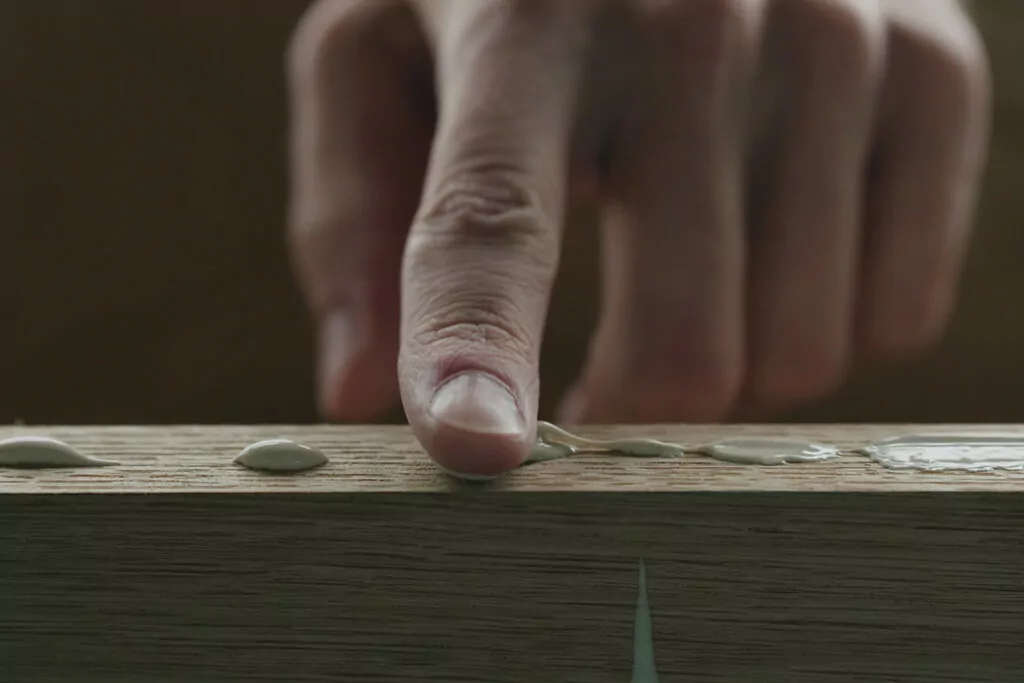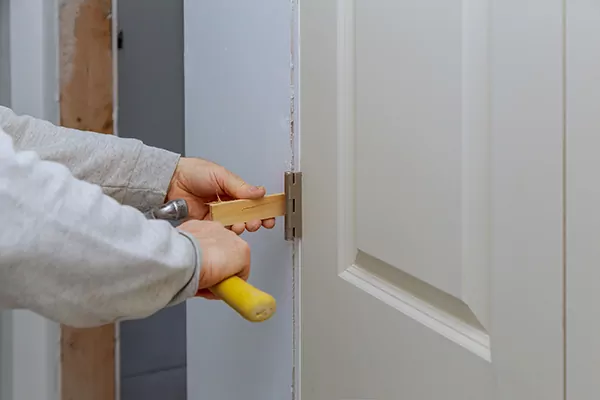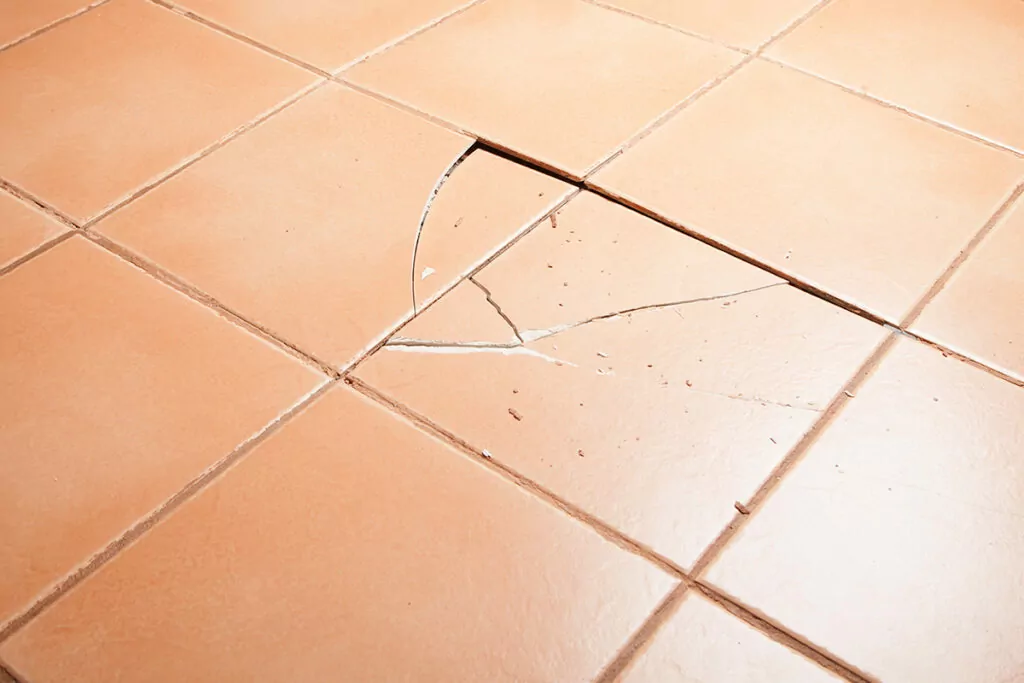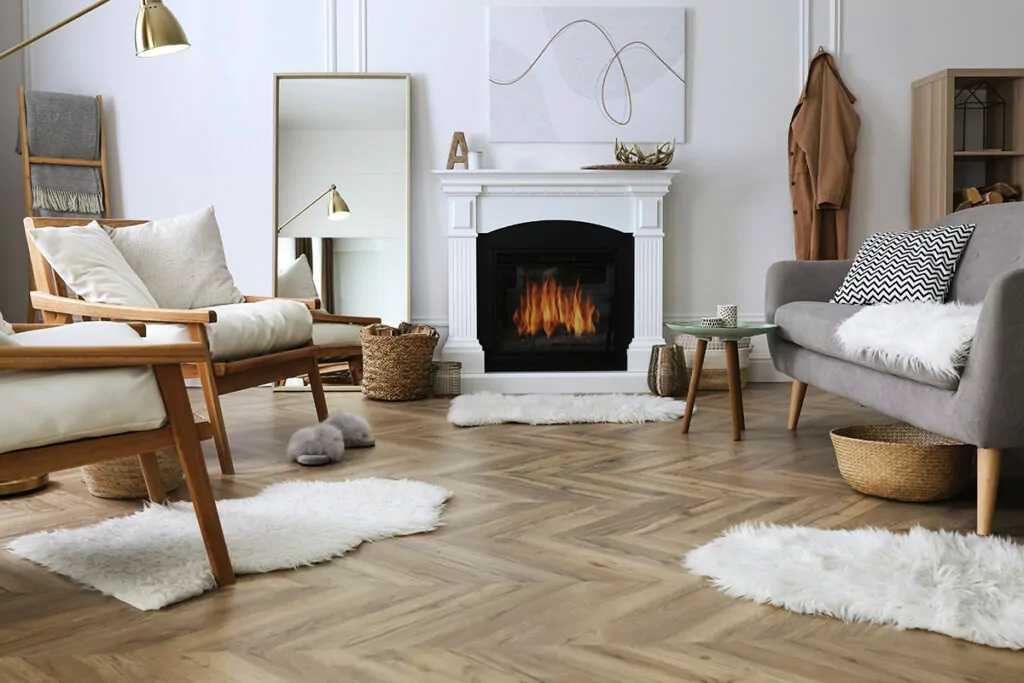Removing sticky glue from wood can be a daunting task, but it’s simple if you know how. Read on for our tips and tricks of how to get sticky residue off wood simply, safely and effectively.
Before we begin, it’s important to keep the following in mind when getting sticky off wood:
- Time is of the essence. The longer you leave the sticky residue on your furniture, the more likely it is that it will bind to the finish of the wood, potentially pulling it up which can lead to staining and damage. Carefully remove the residue as soon as you notice it to minimise any damage.
- Before using any oils or polish to remove the glue, test it on an inconspicuous area as it may cause staining or warping of the wood.
- If you need something stronger such as chemical adhesive remover, always opt for a gentle solution and check the label first, as some products can soften the finish on wood.
- If you need to soften the glue with heat before removing it, be careful with how much heat you apply. Too much heat can cause the wood to bubble, so keep the heat source moving rather than focused on one area.
- Avoid metal scrapers as these can scratch and damage the wood. Always go for a firm but flexible plastic tool, such as an old credit card or store card.
- Always work gently to avoid damaging the surface.
How to get sticky residue off of wood
Start by getting together all the tools you might need:
- A hairdryer
- A plastic scraper such as an old credit card or spatula
- Vinegar, furniture polish and nail polish remover (you will start with vinegar and work your way up depending on the strength of the sticky residue)
- An old cloth and some cotton wool balls/cotton pads
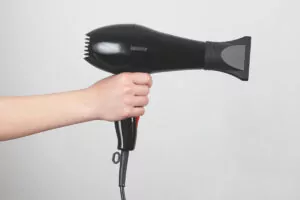
1. Before using any substances on the wood, you can try applying some heat to soften the sticky. Use a low setting on the hairdryer and keep it moving rather than holding over one area to avoid causing any damage. Do this for no more than 2 minutes and if the sticky is soft, you can use your scraper to gently remove the residue.
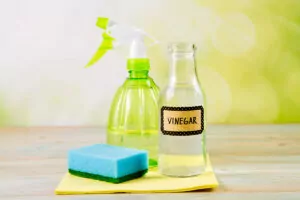
2. If applying heat hasn’t helped, it’s time to move onto vinegar (or a mixture of vinegar and water if you want to start with a gentler approach). Add the vinegar to your cloth and gently wipe over the sticky until it softens. Use your hands or scraper to remove any remaining residue, then clean the area with wood cleaner.
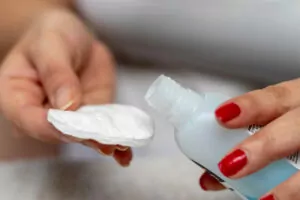
3. If vinegar hasn’t done the trick, you can try with furniture polish. Spray on the affected area and then use a cloth to gently rub the area. You might need a few applications before all the sticky is removed.
4. Finally, you can try a small amount of nail polish remover. Start by applying the nail polish remover to your cotton ball or pad, then rub it gently over the sticky in circular motions being careful not to go outside of the affected area. Wipe up the residue with a dry cloth, then clean the surface with a damp cloth to remove any traces of the nail polish remover.
5. As a last resort you can also try chemical adhesive remover, however always make sure it’s safe to use on wood first and apply it gently.
How to remove super glue from wood
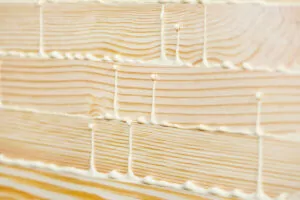
Super glue is a bit tricker to remove than sticky residue, however with the right approach it can be a quick and painless process.
- As super glue is tougher than sticky residue, you’ll need to use a stronger substance than vinegar or polish. Start with nail polish remover on a cotton ball or pad and rub the area gently in circular motions. Once the glue has softened you can then use your plastic scraper to gently ease the glue off the wood.
- You can also try the same method with rubbing alcohol or vodka. Always use sparingly though and test it first in an inconspicuous area. Never leave it on the glue for longer than a few minutes as you will risk damaging your furniture.
There you have it, our simple tips and tricks for removing sticky residue from your furniture. If you’re concerned about causing any damage or would prefer to leave it to the professionals, hire an experienced Tasker today.

